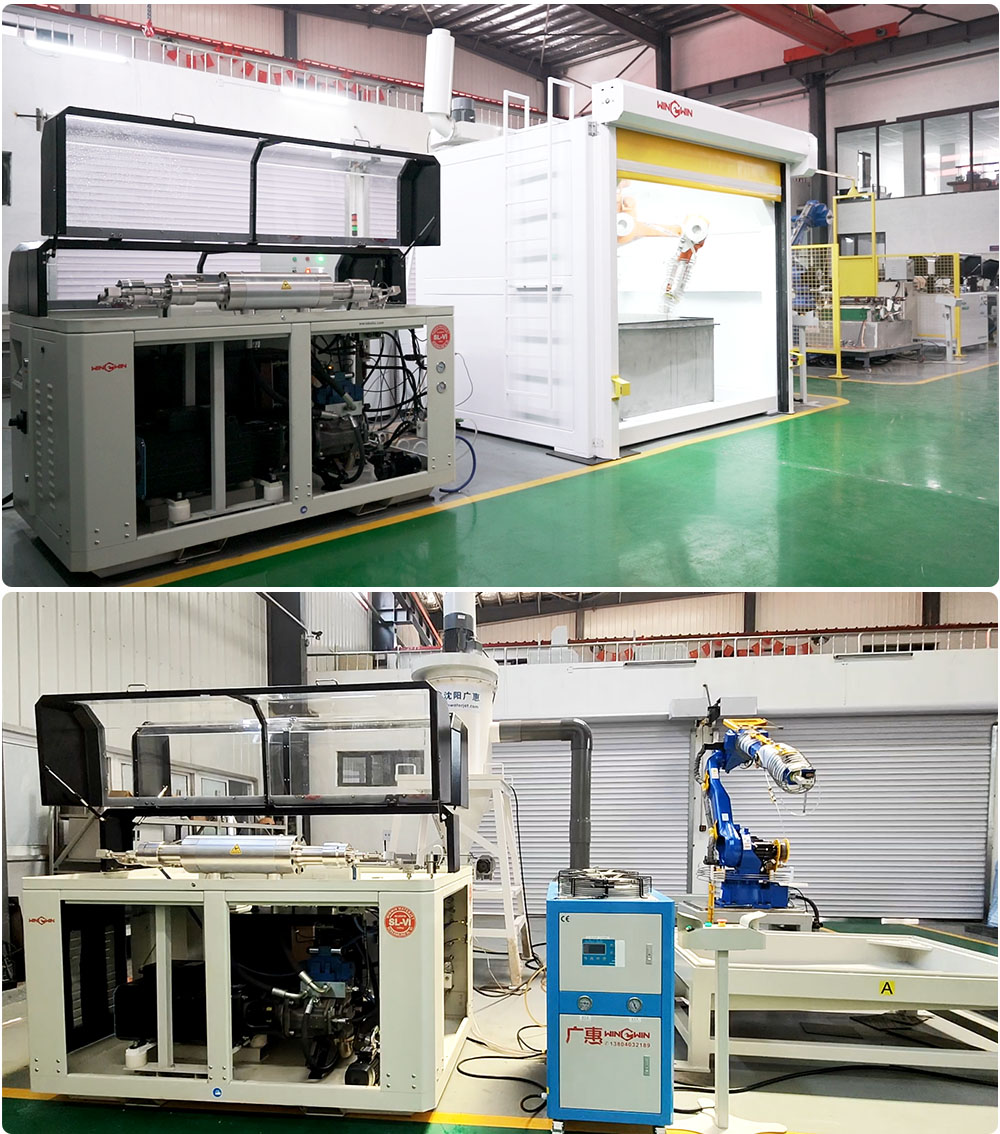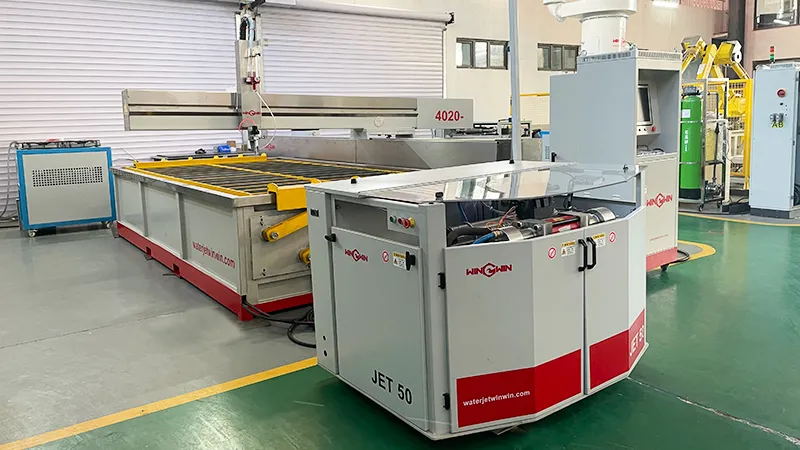Regular maintenance is essential for ensuring optimal performance and longevity of a water jet cutting system. Here are some best practices for maintaining a water jet cutting system:
Regular cleaning: The cutting area of the water jet cutting system should be cleaned regularly to prevent debris and abrasive particles from accumulating and causing damage to the system. The nozzle should also be cleaned regularly to prevent clogging.
Pump maintenance: The high-pressure pump should be checked regularly for leaks, worn seals, and other potential problems. The pump should be properly lubricated and maintained according to the manufacturer's recommendations.
Water quality: The quality of the water used in the water jet cutting system can impact the performance of the system. Water should be properly filtered and treated to prevent contamination and to ensure optimal cutting performance.
Abrasive management: The abrasive particles used in abrasive water jet cutting should be properly managed and monitored to ensure optimal cutting performance and to prevent damage to the system.
Regular inspection: The water jet cutting system should be inspected regularly for signs of wear and damage, including the cutting head, pump, and other critical components. Any potential problems should be addressed promptly to prevent further damage or downtime.
Operator training: Proper training and safety procedures for the operators of the water jet cutting system can help to prevent accidents and injuries, as well as to optimize the cutting process and maintain the performance of the system.
Software and technology updates: Updates and upgrades to the software and technology used in the waterjet cutting system should be implemented regularly to ensure optimal performance and to take advantage of the latest advancements in technology.
Documentation: Proper documentation of maintenance and repair procedures, as well as any changes to the system, can help to ensure consistency and accuracy in the maintenance and operation of the system.
Preventive maintenance: Regular preventive maintenance, such as replacing worn parts and checking critical components, can help to prevent downtime and reduce repair costs.
maintaining a water jet cutting system requires regular cleaning, pump maintenance, water quality management, abrasive management, regular inspection, operator training, software and technology updates, documentation, and preventive maintenance. By following these best practices, operators can optimize the performance and longevity of the system and minimize downtime and repair costs.

The specific steps for repairing a waterjet cutting pump will depend on the type of pump and the nature of the problem. However, here are some general tips for repairing a waterjet cutting pump:
Identify the problem: The first step in repairing a waterjet cutting pump is to identify the problem. Common issues with waterjet cutting pumps include leaks, low pressure, and clogged filters. Once you have identified the problem, you can begin to troubleshoot and diagnose the issue.
Inspect the pump: Before attempting any repairs, inspect the pump to identify any visible damage or wear. Check for loose or damaged fittings, cracked hoses, or worn seals. Also, check the pump oil level and the condition of the pump oil.
Replace damaged parts: If you have identified damaged or worn parts, replace them as needed. This may include replacing hoses, fittings, seals, or other components. Be sure to use the correct replacement parts for your specific pump model.
Clean or replace filters: If the pump is not producing enough pressure, the filters may be clogged. Clean or replace the filters as needed to restore proper pressure.
Check for air leaks: Air leaks can cause the pump to lose pressure. Check all fittings and connections for air leaks, and tighten or replace any loose or damaged components.
Test the pump: Once you have made any necessary repairs or replacements, test the pump to ensure it is functioning properly. Check the pressure and flow rateto ensure they are within the manufacturer's specifications.
Regular maintenance: To prevent future problems with your waterjet cutting pump, it's important to perform regular maintenance. This may include changing the pump oil, cleaning or replacing filters, and inspecting the pump for wear or damage.
It's important to note that repairing a waterjet cutting pump can be a complex and potentially dangerous process. If you are not experienced with pump repair, it's best to seek the assistance of a qualified technician or service provider. Additionally, always follow the manufacturer's recommended guidelines and safety procedures when working on a waterjet cutting pump.

Performing regular maintenance on a waterjet cutting pump is essential to ensure optimal performance and prevent downtime due to equipment failure. Here are some common maintenance tasks for waterjet cutting pumps:
Changing the pump oil: The oil in a waterjet cutting pump should be changed regularly to ensure proper lubrication and prevent damage to the pump components. The frequency of oil changes will depend on the specific pump model and the frequency of use.
Cleaning or replacing filters: The filters in a waterjet cutting pump should be cleaned or replaced regularly to prevent clogs and ensure the proper flow of water. The frequency of filter cleaning or replacement will depend on the specific pump model and the frequency of use.
Inspecting hoses and fittings: The hoses and fittings in a waterjet cutting pump should be inspected regularly for damage or wear. Replace any damaged or worn hoses or fittings immediately to prevent leaks and equipment failure.
Checking the seals: The seals in a waterjet cutting pump should be checked regularly for damage or wear. Replace any damaged or worn seals immediately to prevent leaks and equipment failure.
Checking the pressure and flow rate: The pressure and flow rate of a waterjet cutting pump should be checked regularly to ensure they are within the manufacturer's specifications. Any deviations from the recommended pressure or flow rate should be investigated and corrected immediately.
Inspecting the pump for wear or damage: The pump itself should be inspected regularly for wear or damage. Look for signs of corrosion, cracks,or other damage and replace any damaged components immediately to prevent equipment failure.
Flushing the system: Flushing the waterjet cutting pump system regularly can help to remove any debris or contaminants that may have accumulated in the system. This can help to prevent clogs and ensure optimal performance.
Checking the abrasive feed system: If the waterjet cutting pump uses abrasive material for cutting, the abrasive feed system should be checked regularly for proper operation. Check for clogs, leaks, or other issues that may affect the flow of abrasive material.
Lubricating moving parts: Moving parts in the waterjet cutting pump should be lubricated regularly to ensure proper operation and prevent wear. Follow the manufacturer's recommended lubrication schedule and use the recommended lubricants.
Keeping the pump clean: Keeping the waterjet cutting pump clean can help to prevent clogs, leaks, and other issues. Wipe down the pump regularly and remove any debris or contaminants that may have accumulated around the pump.
 wwaterjet
wwaterjet